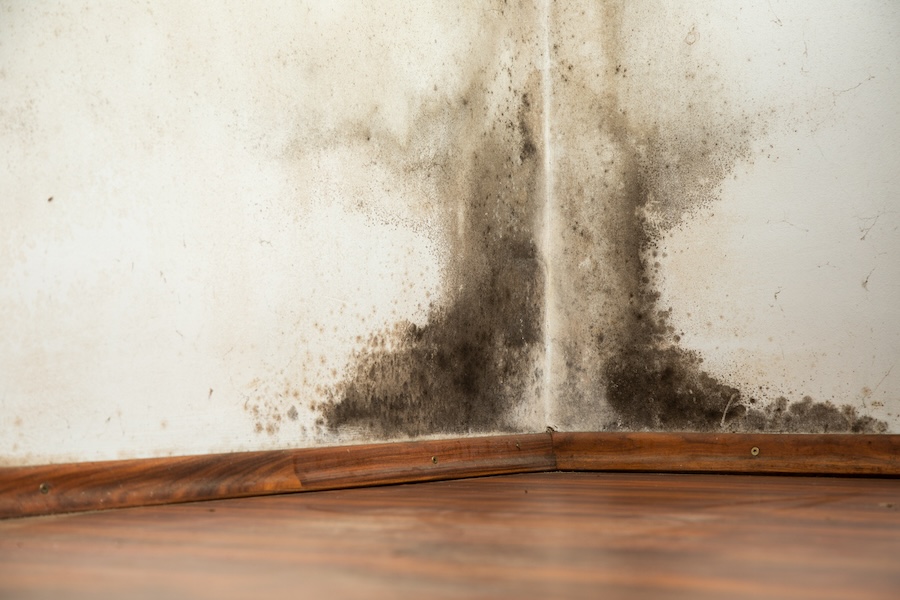Mold is one of the most unwelcome problems homeowners face, often appearing in damp corners or poorly ventilated rooms. Because rubbing alcohol is known for its disinfecting power, many people ask, can rubbing alcohol kill mold? Isopropyl alcohol, the main ingredient, dries quickly and destroys microorganisms on contact. These traits make it appealing for cleaning, yet its effectiveness against mold depends on how it is used and where the growth occurs. Understanding its strengths and weaknesses helps homeowners decide whether it is a temporary fix or a practical cleaning solution.
Understanding Mold and Its Health Risks
Mold is a fungus that multiplies through tiny airborne spores and thrives wherever moisture lingers. It can live on materials like paint, plaster, or fabric, feeding on organic particles. Over time, this growth can damage walls, ceilings, and furniture while releasing spores that irritate the eyes, throat, and lungs. Certain molds, such as black mold, can even produce harmful toxins that affect indoor air quality. Without early removal, colonies spread quickly, turning a small stain into a costly repair project. Recognizing its dangers reminds homeowners why swift and safe cleanup is essential.
Can Rubbing Alcohol Kill Mold?
The answer to can rubbing alcohol kill mold depends on the surface type and concentration used. When applied at 70% strength or higher, isopropyl alcohol breaks down mold cells by dissolving their membranes and dehydrating their structure. It works especially well on glass, metal, and other non-porous materials where spores remain on the surface. However, alcohol cannot penetrate deep layers of porous substances like wood or drywall, where mold roots often extend. This means alcohol can remove visible growth but not what hides underneath. For lasting results, it is best viewed as a cleaning aid rather than a total remediation method.
For dependable and safe mold inspection or cleanup, trust GCR Builders LLC. Their trained technicians handle hidden mold problems with specialized tools and long-term prevention strategies designed to restore healthy indoor environments.
How to Use Rubbing Alcohol Safely for Mold Removal
Before cleaning, open windows to allow airflow and put on gloves, goggles, and a mask to avoid contact with spores or fumes. Apply rubbing alcohol directly to the moldy area using a clean cloth or spray bottle. Let it sit for several minutes to break down the growth, then gently wipe and dry the surface completely. Dispose of rags carefully to prevent spreading spores elsewhere. Never combine alcohol with bleach or other chemicals, as doing so may release toxic vapors. When handled responsibly, rubbing alcohol mold removal is an easy, low-odor way to disinfect small spots without damaging most finishes.
Alcohol vs. Other Mold Removal Methods
Each cleaning agent has a different advantage. Alcohol evaporates quickly and leaves surfaces clean without residue, while vinegar has deeper penetration but a strong scent. Bleach can whiten stains and kill surface mold fast but may corrode materials or cause irritation. Commercial mold removers, often used by professionals, combine antimicrobial formulas with drying agents to ensure complete removal. Compared to these, alcohol is safer for quick cleanups but lacks the lasting power of professional systems. The right choice depends on how large or deep the mold contamination has become.
When to Call Mold Removal Experts
DIY cleaning with isopropyl alcohol works well for isolated patches, yet larger infestations demand expert help. If you notice mold spreading behind wallpaper, recurring after cleaning, or covering multiple rooms, professional remediation is safer and more effective. Certified specialists inspect, contain, and remove mold using advanced filtration and drying equipment. They also trace its cause—such as plumbing leaks or poor ventilation—so it does not return. Attempting major cleanup alone can worsen contamination or create health hazards. Professional services ensure your property remains safe, dry, and mold-free for the long term.
Conclusion
So, can rubbing alcohol kill mold effectively? Yes, but only in specific situations. It can sanitize and clean small mold patches on non-porous surfaces, offering a convenient solution for light contamination. However, it cannot reach deep mold colonies or replace the expertise of professional remediation. Used carefully, it serves as a valuable first step toward maintaining cleaner and healthier spaces. Regular ventilation, moisture control, and timely repairs remain the most reliable defenses against future mold growth in any home.
FAQs
Does rubbing alcohol kill all mold species?
It eliminates many surface molds but cannot reach mold rooted inside porous materials.
Is isopropyl alcohol safe for household mold cleaning?
Yes, when used in ventilated areas with protective gear and without mixing other cleaners.
Can rubbing alcohol replace bleach for mold treatment?
It can disinfect small areas, though bleach works faster on large visible patches.
What strength of alcohol should I use for cleaning mold?
Use at least a 70% concentration for the best disinfecting effect.
When should professionals handle mold instead of DIY cleaning?
Call experts if mold keeps returning, covers wide spaces, or causes musty odors and health issues.


